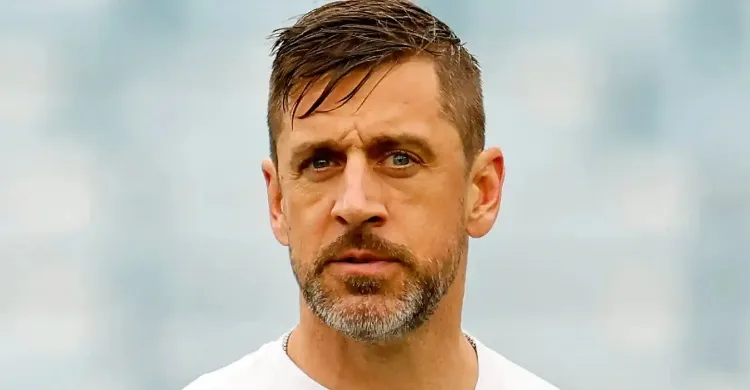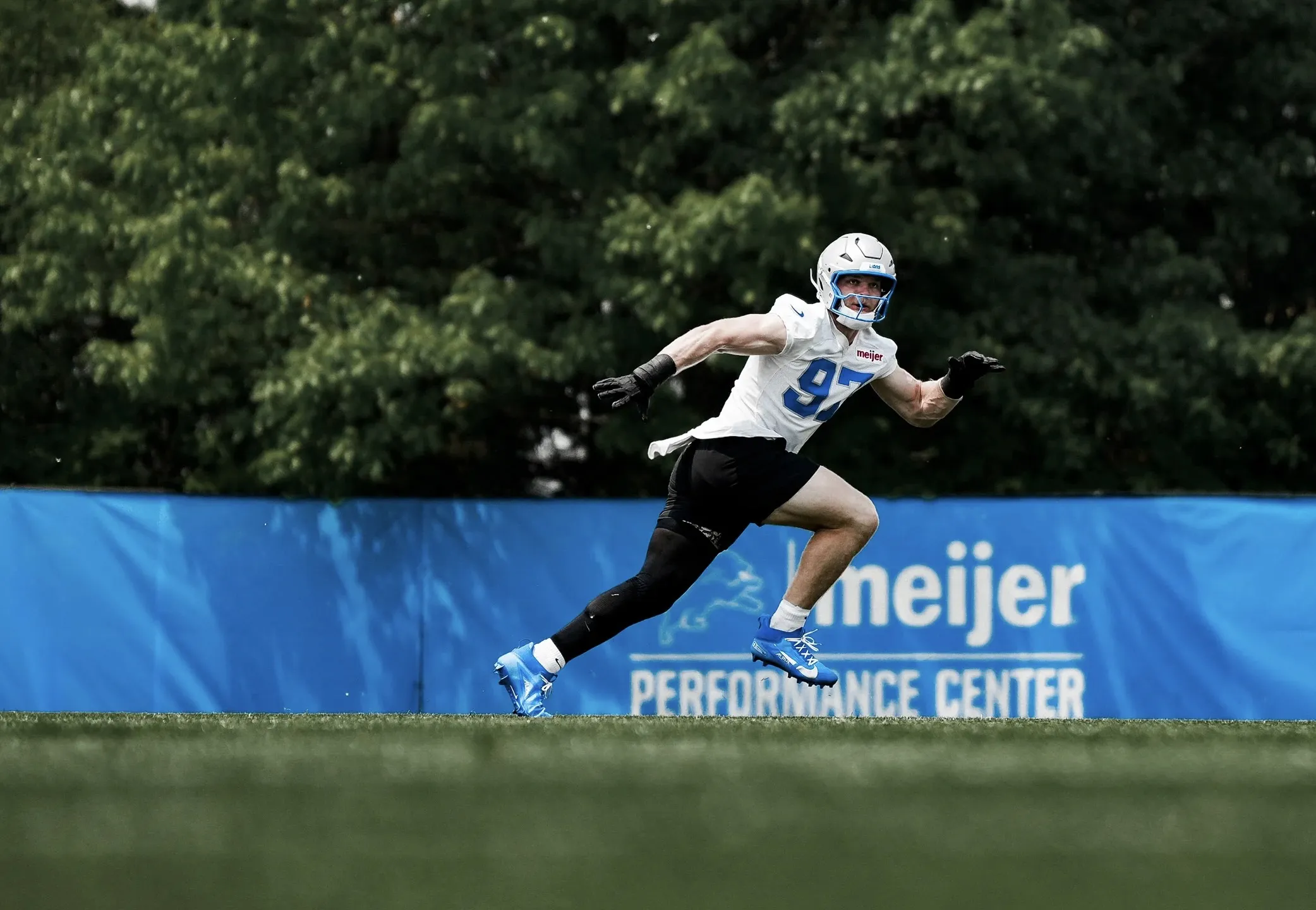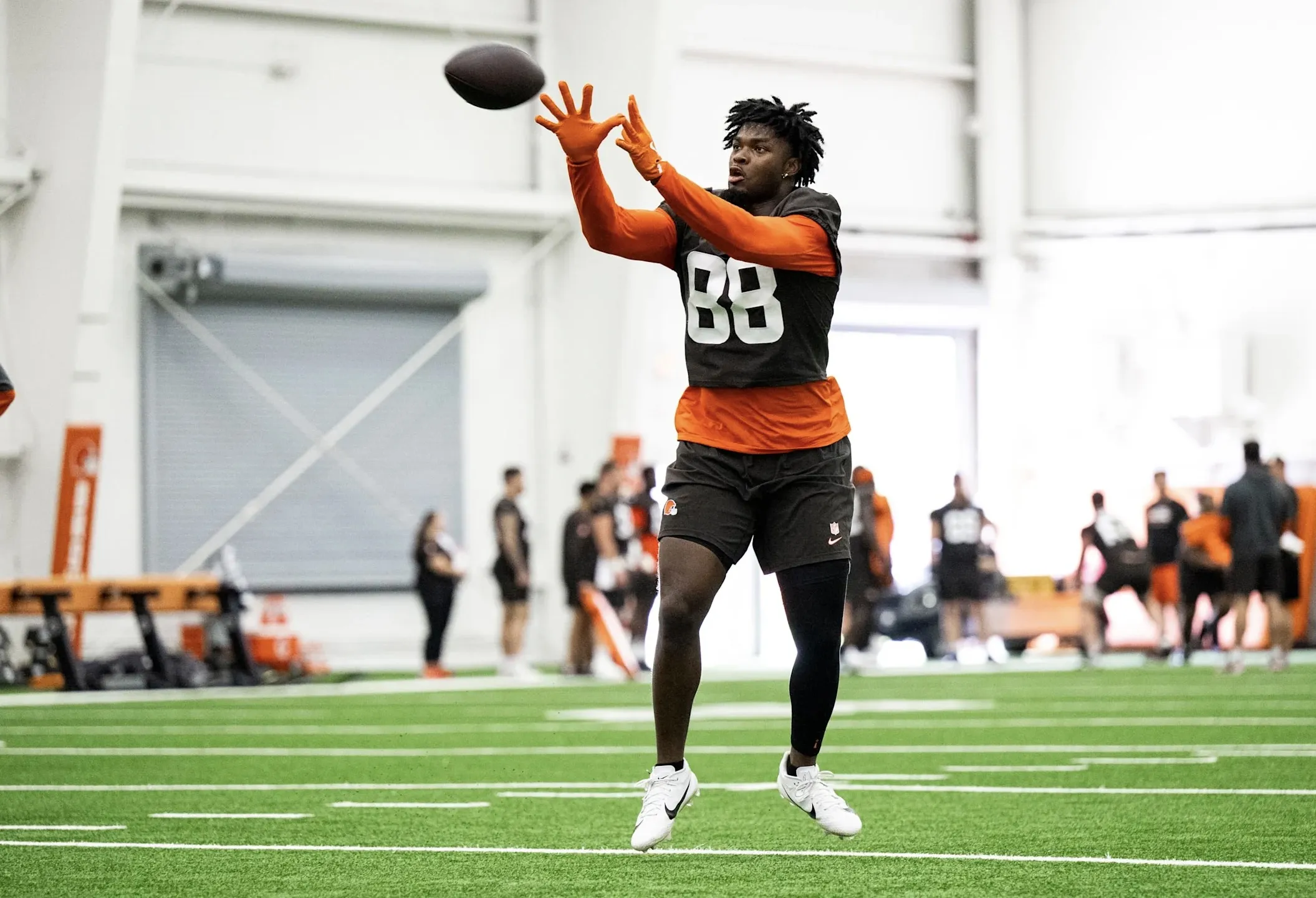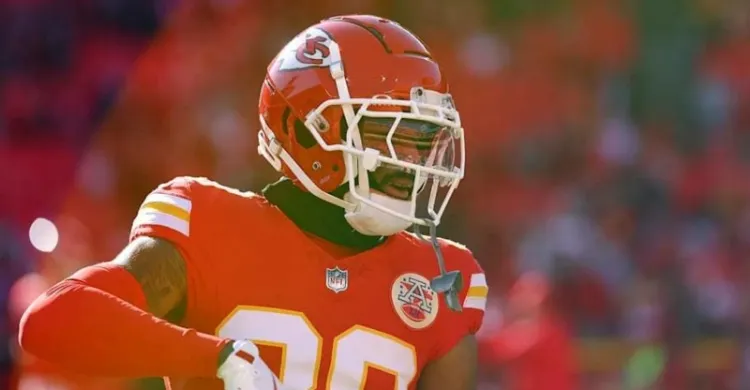Like most drafts, the Minnesota Vikings’ highlight came on opening night. The Vikings were on the clock with the 24th-overall pick and watched as several options came off the board. Walter Nolen, Kenneth Grant, and Derrick Harmon were all rumored targets if Minnesota stayed put, but they had all been selected earlier than expected. Armed with four picks at the time, nobody would have blamed them if they decided to trade down.

Instead, they selected Ohio State guard Donovan Jackson.
Jackson was the final Infinity Stone in Kevin O’Connell’s metaphorical gauntlet, which he created hours after losing to the Los Angeles Rams in the playoffs. By replacing Garrett Bradbury and Ed Ingram with Ryan Kelly and Will Fries, Jackson was the player who completed the offensive line overhaul, perhaps finally answering the question, Can he play guard?
Minnesota’s O-line makeover has generated plenty of attention. However, it wasn’t the only unit that received the finishing touch in the draft. That came in the fifth round when the Vikings selected Georgia defensive lineman Tyrion Ingram-Dawkins. The former five-star recruit is the type of high-upside player teams seek in the later rounds and may have been the missing piece to a defensive line that the Vikings also overhauled.
It starts with what the defensive line used to be. A franchise with a group known as The Purple People Eaters usually has help in the trenches; fans can list the legendary names. There was John Randle in the 1990s, the Williams Wall in the 2000s, and Linval Joseph in the 2010s.
All those players were monsters in the interior, but the Vikings shied away from this concept in the 2020s. Mike Zimmer wanted his defensive linemen to eat up blocks so Anthony Barr and Eric Kendricks could make plays, which led to events like finding “The Next Danielle Hunter” and Andre Patterson emphatically calling Shamar Stephen “The Real Deal.”
The defensive line received reinforcements when they signed Harrison Phillips in 2022 and unearthed undrafted free agent Jalen Redmond the following year. Phillips and Redmond did yeoman’s work in the trenches, freeing the players behind them to make plays. However, the Vikings needed a penetrating force they had often lacked over the past 25 years.
Free agency was the first step. The Vikings signed former Pro Bowlers Jonathan Allen and Javon Hargrave. While Allen and Hargrave have been dominant at times, they are both on the wrong side of 30, which creates a need to find some depth. The signings pushed Redmond into that role, but Flores opted for one more weapon when he took Ingram-Dawkins in the draft.
If you look at Ingram-Dawkins’ stats, you’ll be disappointed. He managed 37 total tackles (12.5 for loss) and four sacks during his four years at Georgia. The Athletic’s Dane Brugler noted that he still needs to work on his pass-rush instincts, and he was only a one-year starter with the Bulldogs.
But where Flores and the Vikings are probably excited is how he was used. Ingram-Dawkins was part of a pass-rushing group that included a pair of top-15 draft picks, edge rusher Mykel Williams (11th overall by the San Francisco 49ers) and Jalon Walker (15th overall by the Atlanta Falcons). With Christen Miller, Chaz Chambliss, and Nazir Stackhouse having major roles, no defensive lineman played more than Ingram-Dawkins’s 536 total defensive snaps.
It’s the kind of style that is becoming more popular in the NFL. It used to be that the Vikings would line up the same four linemen and let Jared Allen play hero ball in the Metrodome, playing over 1,000 snaps in five of his six seasons in Minnesota. But only one lineman had more than 600 snaps for the Vikings last season, with Harrison Phillips’ team-leading 701 snaps.
The easy answer is that the Vikings don’t have an Allen on their roster as a hand-in-the-dirt, pass-rushing force. But it’s also an adaptation where teams rotate players to keep their front line fresh.
The Philadelphia Eagles mastered this last season, where 11 different defensive linemen and edge rushers played over 150 snaps. While Jalen Carter’s 830 snaps ranked 15th among defensive linemen, the Eagles threw waves of pass rushers at their opponents. It helped them throw Patrick Mahomes to the ground six times during Super Bowl LIV — and do it without blitzing.
That’s something that just hasn’t happened in Flores’ two seasons in Minnesota. The Vikings blitzed 51.5% of the time, with a 21.9% pressure rate in 2023, before blitzing 38.9% of the time with a 25.3% pressure rate last season. The Eagles were one of the most conservative teams in blitz rate at 19.1% a year ago, but it was because they had the personnel to do the dirty work in the trenches.
Ingram-Dawkins could be that type of player. In addition to his experience in a rotation role, he posted a 9.85 relative athletic score (RAS) that was 29th out of 1,812 defensive linemen dating back to 1987. Brugler also noted he has the explosiveness of an edge rusher but could be a force over the B-gap.
It’s the type of depth the Vikings have looked for throughout the roster, but specifically needed it in the trenches. If Allen or Hargrave goes down, they can lean on Ingram-Dawkins. If they live up to their hype, Ingram-Dawkins can also play beside them, giving opposing offenses two levels of pass rushers to worry about with Jonathan Greenard and Andrew Van Ginkel behind them.
That’s where building depth pays off and makes Ingram-Dawkins the final piece of an overhaul in the trenches.



